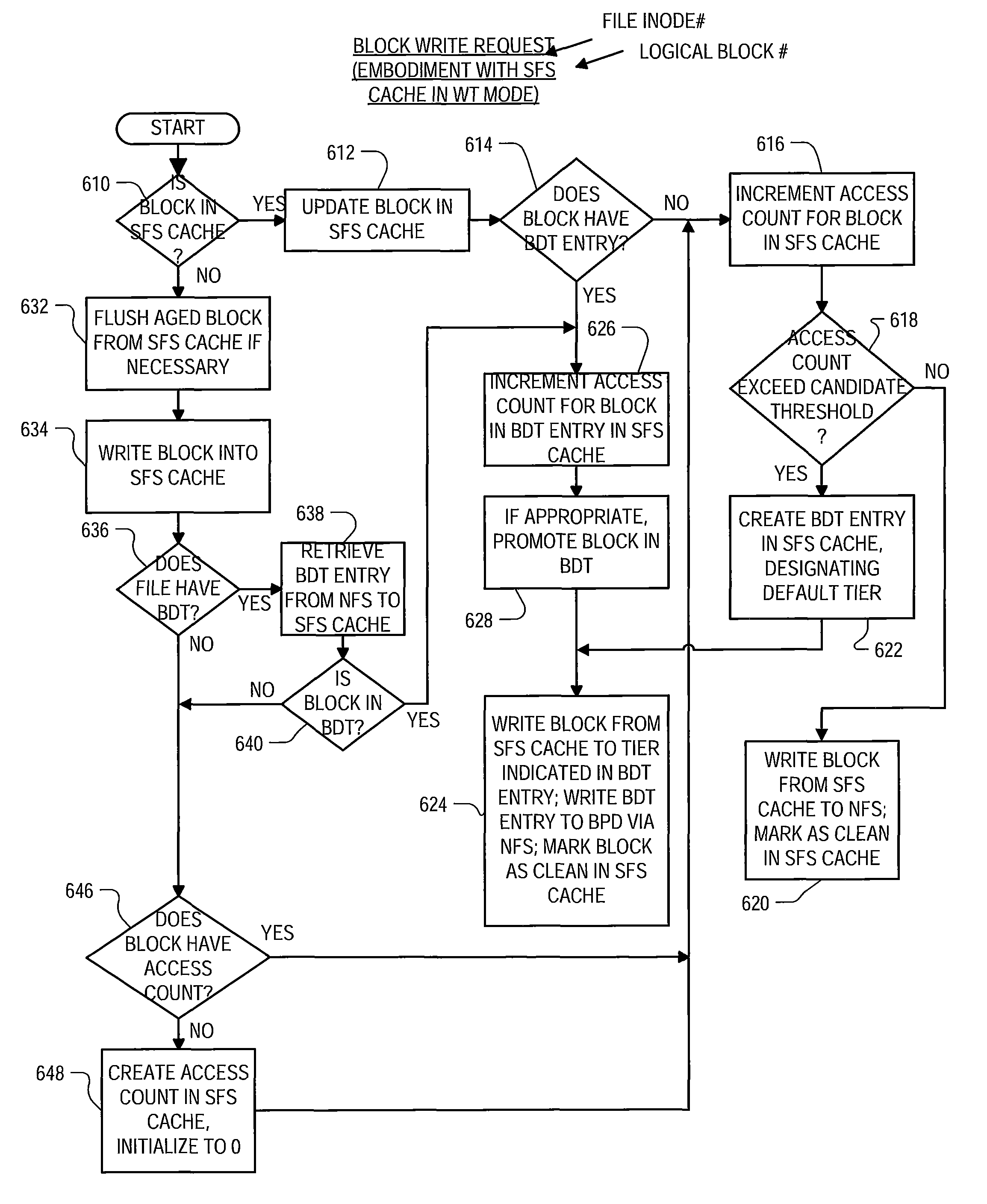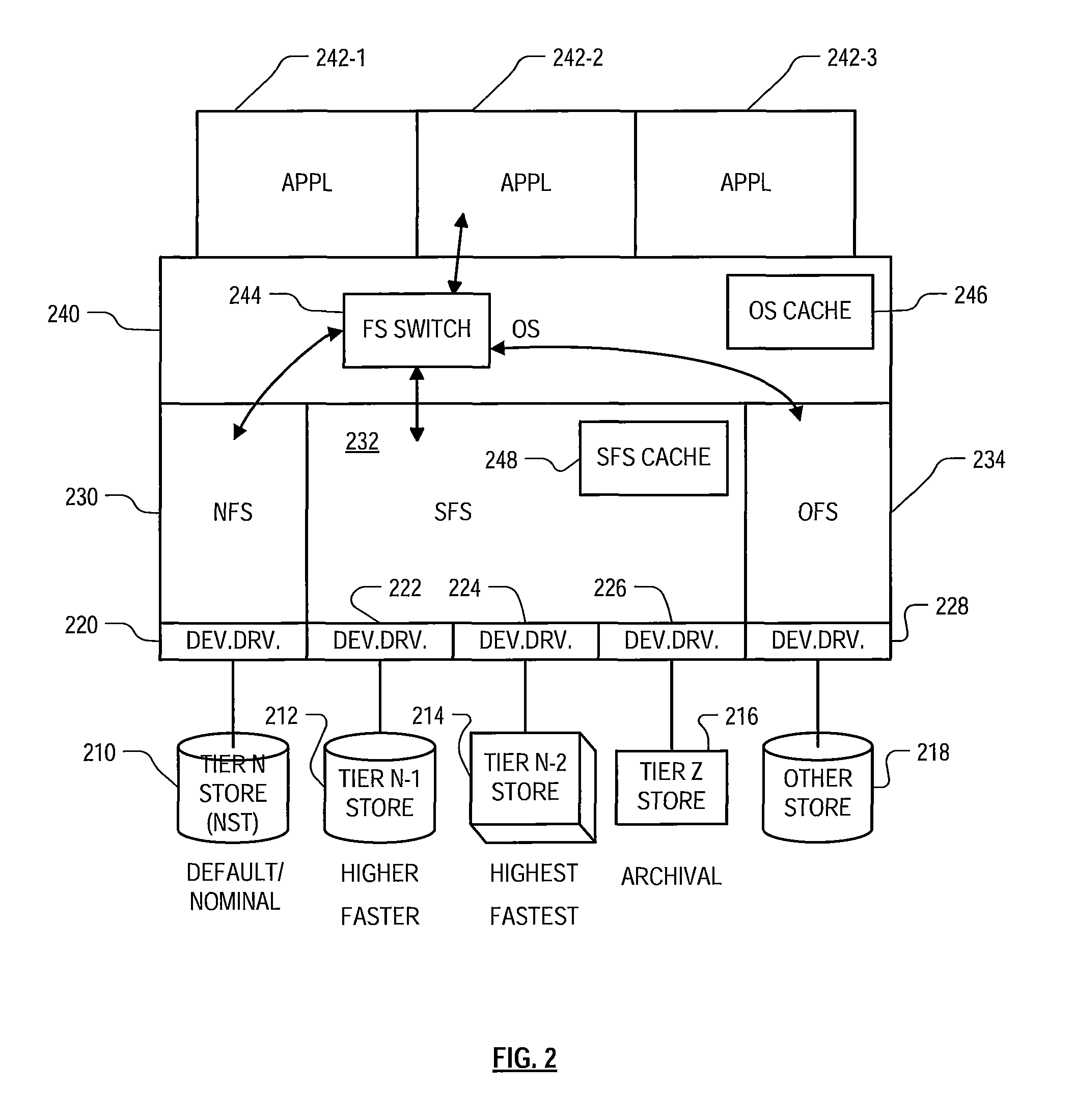Hybrid storage system
a storage system and hybrid technology, applied in the field of computer filesystems and persistent storage management, can solve the problems of inability to address a particular storage device encapsulated by the device driver, inability to share multiple filesystems, and inability to achieve conventional tiered storage systems. achieve the effect of improving performance, improving capacity and improving computer systems
- Summary
- Abstract
- Description
- Claims
- Application Information
AI Technical Summary
Benefits of technology
Problems solved by technology
Method used
Image
Examples
Embodiment Construction
[0033]The following description is presented to enable any person skilled in the art to make and use the invention, and is provided in the context of a particular application and its requirements. Various modifications to the disclosed embodiments will be readily apparent to those skilled in the art, and the general principles defined herein may be applied to other embodiments and applications without departing from the spirit and scope of the present invention. Thus, the present invention is not intended to be limited to the embodiments shown, but is to be accorded the widest scope consistent with the principles and features disclosed herein.
Overview
[0034]Embodiments of the invention have a filesystem for hierarchical storage systems consisting of multiple tiers of storage devices. Each tier makes a different tradeoff between performance and capacity. In one embodiment the performance hierarchy is topped by SSD drives followed by SAS drives, SATA drives and tape libraries. The reve...
PUM
 Login to View More
Login to View More Abstract
Description
Claims
Application Information
 Login to View More
Login to View More - R&D
- Intellectual Property
- Life Sciences
- Materials
- Tech Scout
- Unparalleled Data Quality
- Higher Quality Content
- 60% Fewer Hallucinations
Browse by: Latest US Patents, China's latest patents, Technical Efficacy Thesaurus, Application Domain, Technology Topic, Popular Technical Reports.
© 2025 PatSnap. All rights reserved.Legal|Privacy policy|Modern Slavery Act Transparency Statement|Sitemap|About US| Contact US: help@patsnap.com



